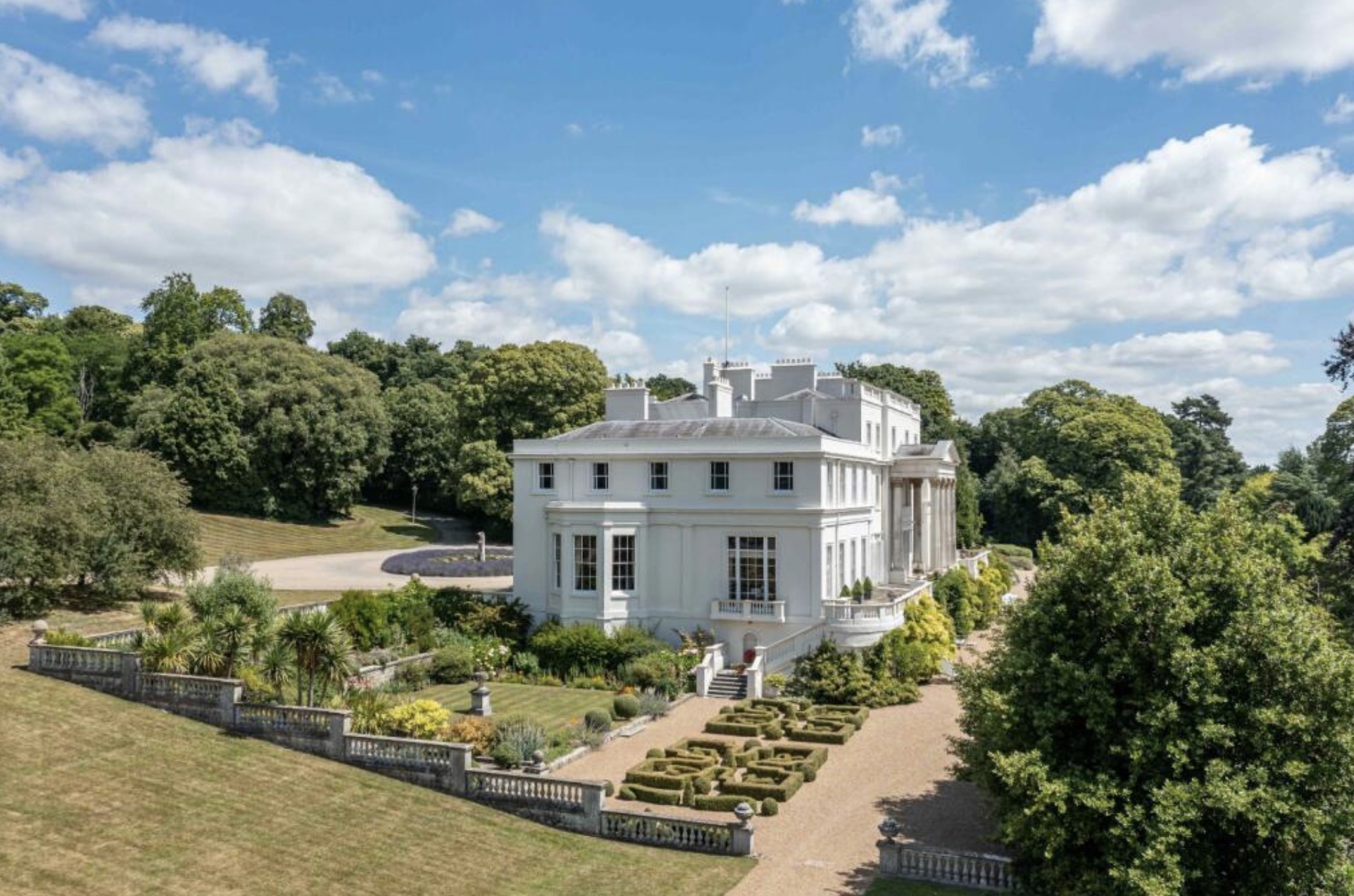History of Linton Park
Linton Park, formerly is a large 18th-century country house in Linton, Kent, England. The house is Grade I listed and the garden and park is listed Grade II.
Original Property
Linton Park, originally known as Linton Place and Linton Hall.
In Linton, Kent, England, there is a sizable 18th-century country mansion known as Linton Park, originally known as Linton Place or Linton Hall. ‘Capell’s Court’, a structure constructed by Robert Mann in 1730 to replace one that was much older Before becoming a part of the Cornwallis family, the estate was owned by numerous members of Mann’s family. In 1825, the mansion was expanded to its present size.
The home is prominently situated halfway down a south-facing slope, with stunning views of the surrounding grounds and the Weald beyond. In the gardens around the house are formal walkways that were planned in 1825 and specimen trees that were planted both then and afterwards.
The garden and park are listed as Grade II* structures, and the house is a Grade I listed structure. Other constructions and buildings







History of Linton Park
It was owned by the de Capell family from the late 14th to the mid-15th centuries, and they are the source of the name.
On the location of Linton Park, a residence known as Capell’s Court has existed since the late 14th century.It was owned by the de Capell family from the late 14th to the mid-15th centuries, and they are the source of the name. The Baysden family bought it next, and they had it until the late 16th century, when they sold it to Sir Anthony Mayney. The land was sold to Sir Francis Wythen, a judge, by Mayney’s grandson. The estate was passed down to Wythen’s daughter Catherine, who later sold it to London businessman Sir Robert Mann after her second marriage to Brigadier-General Sir George Jocelyn.
Mann constructed the initial portion of the current mansion after demolishing Capell’s Court around 1730. The mansion was given to his son Edward Mann after his death in 1751. When Edward Mann passed away in 1775 without leaving any children, his brother, the diplomat Sir Horace Mann, inherited the mansion. When Sir Horace was created a baronet in 1755, he adopted the name of the estate as his territorial designation despite residing in Florence on a long-term basis.
Sir Horace Walpole
Horace Walpole had Sir Horace Mann as a friend and longtime correspondent. Walpole wrote to Sir Horace in Florence in 1757 after visiting Edward Mann at Linton Park: "The house is fine and stands like the citadel of Kent; the whole county is its garden." After Sir Horace's death in 1786, his nephew Sir Horatio Mann MP of Boughton Place in neighbouring Boughton Malherbe received the baronetcy and the property.
James Cornwallis Bishop of Lichfield
James Cornwallis, Bishop of Lichfield, who was the widowed husband of Mann's older sister, Catherine, inherited the property after Sir Horatio died in 1814.[5] After his nephew Charles Cornwallis, 2nd Marquess Cornwallis, passed away in 1823, Cornwallis succeeded him as the fourth Earl Cornwallis, but he passed away in 1824.
James Cornwallis
His son James, the fifth Earl, received the estate.
His son James, the fifth Earl, received the estate. The land was passed down to Julia, the fifth Earl’s daughter, after his death in 1852. She wed William Amherst, Viscount Holmesdale, in 1862; he would eventually become the third Earl Amherst after she passed away in 1883.
Fiennes Stanley Wykeham Cornwallis MP, the second daughter of the fifth Earl Cornwallis who became the first Baron Cornwallis in 1927, owned the land by 1888. The mansion was his until his passing in 1935. The first baron was succeeded by his second son, Wykeham Stanley Cornwallis, after his first son, Captain Fiennes Wykeham Mann Cornwallis MC, was killed in an IRA ambush in Gort, County Galway in 1921[7]. In 1937, the second baron sold the home, and Olaf Hambro, a descendant of the Hambro banking dynasty, purchased it. Hambro passed away in 1961, and the Daubeny family purchased the home.
The home and the grounds closest to it were sold to the Freemasons in 1974 and used as a school for a short time before Camellia Group Ltd acquired corporate ownership of the property in 1985.


Plan an Unforgettable Experience at Linton Park Today!
Subscribe
Subscribe to our quarterly Newsletter or Community Events.
